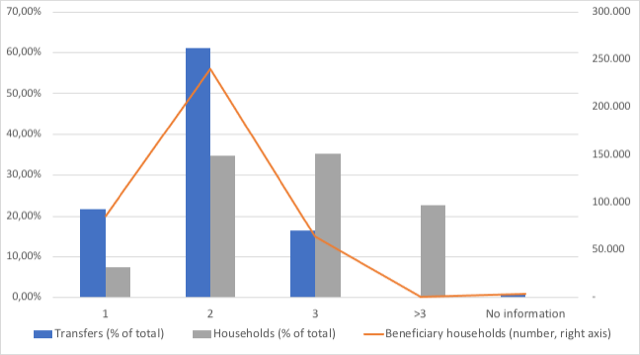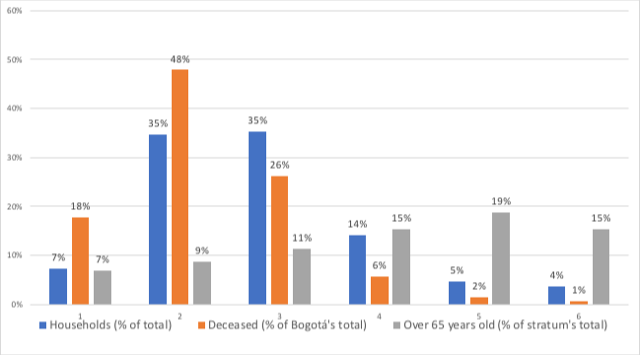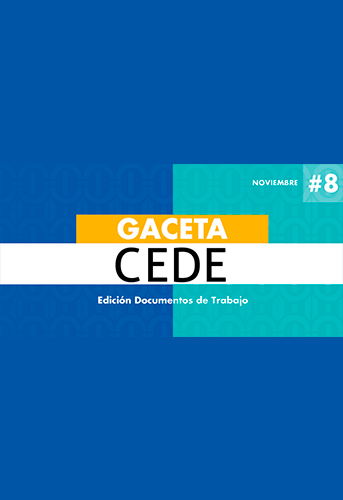Working Papers Edition

The Colombian armed conflict harmed thousands of families. One reparation strategy for households victims of forced displacement is the Productive Projects Program (PPP) of the Unit for Land Restitution (URT). This program supports families benefitting from the land restitution and reparation program with financial and technical assistance to productively develop the land and generate income. Jorge Maldonado, Andrei Romero and Viviana León-Jurado estimate the effects of program participation and duration, changes in the program’s features, and differences when there is a female head of household.
Program participation reduces household poverty, decreasing the Multidimensional Poverty Index (MPI) in two privations, on average, while increasing assets, food security and reported well-being. It also decreases the probability of recurring to informal credit by 30% and increases the probability of accessing a formal credit by 20%.
Although the program does not explicitly follow a gender approach, effects like increased food security, increased assets and well-being gains are larger with female household heads. Several of these benefits after program completion revealing its sustainability over time. These results show that the PPP is meeting its objectives and they encourage to continue the efforts towards armed conflict victims’ reparation.
Read more
La restitución de tierras y la estabilización socioeconómica de los hogares desplazados en Colombia ¿Cómo vamos?
Jorge H. Maldonado, Andrei Romero, Viviana León-Jurado
Documento CEDE No.2020-33

The COVID-19 crisis entails significant challenges for governments around the world. Not only do they need to worry about decreasing contagions and deaths from the virus, but they also have to deal with the resulting economic recession and its impacts on the population’s well-being. David Arboleda and Andrés Zambrano analyze the pandemic’s effect on the main economic and health indicators in Bogota, and the response of the local government. Their results show that the virus has caused more deaths among poorer socioeconomic strata (1 to 3), despite having the lowest share of population over 65 years. On the other hand, they find that the transfer programs have been correctly targeted to the poorest and that the fiscal management has been adequate. Social welfare programs have reached the most vulnerable households and the city’s fiscal position enabled implementing large-scale social programs without compromising fiscal sustainability.
Transfers and households by socioeconomic strata

The study highlights the importance of good local public policies that complement the national-level strategies to attenuate the effects of the pandemic. Local programs can be adapted to each city’s particular context, are easier to implement at small scale than in the whole country and can be evaluated for later implementation in other places.
Households, Covid-related deaths, and seniors by socioeconomic strata

Read More
Vulnerability after covid-19 and the response of a developing city: the case of Bogota, Colombia
David Arboleda and Andrés Zambrano
Documento CEDE No.2020-36

For most students from developing countries, the choice between attending college or not after finishing high school is not easy. Although studying more increases future income, the need to work and earn money right away can prevent that from happening. Enrolling in college may be even more difficult when there is a break between high school graduation and college entrance.
Nicolás de Roux and Evan Riehl study the effect of a shift in the academic calendar of two regions in Colombia that generated variation in the duration of the break between high school and college for a group of students. The authors find that this break causes the college enrollment rate in the next semester to fall by 5 percentage points. Many affected students no not enroll years later, and they estimate that only half of them began college over the next few years. Their results also show that high-ability students deciding not to attend college as a result of the break, earn 50% less, on average, than if they had continue studying. Instead, they find no differences in labor market indicators for lower-ability students, which suggests that they would have benefitted less from attending college than high-ability students.
These results show that policies aimed at reducing differences in income should not only focus on raising college enrollment rates, but on reducing the pre-existing inequalities among students.
Read More
Disrupted Academic Careers: The Returns to Time Off after High School
Nicolás de Roux and Evan Riehl
Documento CEDE No.2020-37
Other CEDE Working Papers
